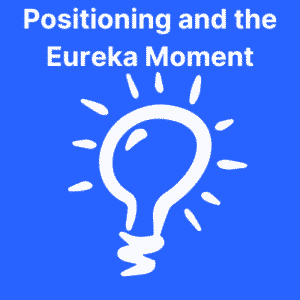About a month ago, I lost a tooth.
How?
That depends on which version of the story you’d like to hear.
Version one: I’m in a bar with my buddies, talking sports, minding my own business, when a beer is knocked over by someone who had too much to drink. Words are exchanged, shoves are traded, and fists fly. If you think I looked bad, you should’ve seen the other guy!
Version two: I’m playing hockey (ice, not field!), my life-long passion. A battle for the puck ends in a big-time collision, and I lose more than the game—goodbye, tooth. When you’re 5’7” and 140 pounds, sometimes you don’t come out on top!
Version three: The real story. It’s early Monday morning and I’m anxious to get to a client. I trip over my 90-pound golden doodle getting out of bed, and do a face on the bedroom floor.
One thing leads to another, and before I know it, I’m in an ambulance, trying to figure out what just happened.
What do these stories have in common? They all get your attention. But only one is true.
And that’s the point.
Storytelling is about picking the narrative that resonates, sticks, and gets your audience to lean in.
Why Stories Matter in Marketing
Marketing advice is often bogged down in jargon: “value-added or insightful content,” “engagement strategies,” “optimization.”
But at the heart of it all lies a simple truth: People don’t remember facts—they remember stories.
A well-told story entertains, enlightens, engages, builds empathy, and drives action. For marketers and brands, storytelling isn’t optional; it’s foundational. Your audience is drowning in content, so your narrative has to cut through the noise.
What’s Your Brand’s Story?
When I work with B2B and SaaS companies with their positioning and strategic planning, I’ve noticed a common challenge: they love talking about what they do but struggle to articulate why it matters.
That’s where storytelling comes in. A compelling brand story connects your product or service to your audience’s needs and aspirations. It differentiates you in a market crowded with competitors all saying similar things.
To craft your narrative:
Know Your Audience: Understand their challenges, goals, and emotions. The “Jobs to Be Done” framework is an excellent tool for uncovering the stories your customers need to hear.
Own Your Differentiator: What makes you unique? Maybe it’s a feature, a value, or even the personality of your brand.
Be Relatable: Show your human side. Like tripping over a dog or losing a tooth, it’s the imperfections that make stories—and brands—real.
Applying the Narrative Lens
Let’s revisit the tooth story. Which version would I tell in a meeting? That depends on the audience.
If I’m talking to the boys, I’m telling them the bar story. There’s nothing better than a David versus Goliath saga.
If I’m speaking to hockey players or fans, the hockey story wins. It’s relatable and taps into shared passion.
In a more general setting, the real story works. It’s honest, unexpected, and, let’s face it, funny (although I was definitely not laughing at the time!)
The key is aligning the narrative to the audience’s emotions and the action you want them to take.
Your Next Steps
Take a hard look at your brand story. Is it clear? Is it compelling? Does it resonate with your ideal customer? If not, it’s time to rewrite the script.
Remember, in a world full of noise, stories are signals. And if all else fails, just trip over a dog—it worked for me.
What’s your favorite brand story? Or better yet, what’s yours? Drop a comment—I’d love to hear it.
More: When I tell people the real story, the first response from many of them is, “How’s your dog?” I’m not sure whether they’re referring to my dog’s physical or mental health, but rest assured, the dog is fine.
Of course, he now sleeps in the corner of the bedroom rather than beside the bed. Lesson learned!
As an eternal optimist, I count myself lucky to have only lost a tooth and a cut over my eyebrow. At lot worse things could have happened.
What’s the story behind your brand? Share it in the comments—I’d love to help you refine it.



